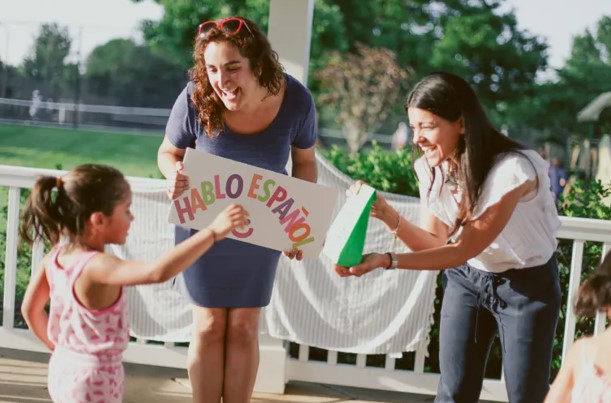Enrolling your child in a language immersion program is an exciting step toward bilingualism, but it’s natural to feel a little nervous about how they’ll handle this new experience. Children adapt to immersion environments differently based on their age, personality, and previous exposure to other languages. However, their natural ability to pick up language means they are often more equipped for this journey than adults are.
This guide will help you prepare your child—and yourself—for their language immersion journey. With the right support, your child can transition smoothly into their new learning environment.
1. Start With a Positive Mindset
Children often mirror the emotions of the adults around them. If you’re feeling nervous about the program, try not to project those feelings onto your child, especially if they don’t seem worried themselves.
Instead, express enthusiasm about the opportunity. For example, say something like:
✔️ “You’re going to hear your teacher speak in [language name]. It will be a fun way to learn new words, and they’ll be there to help you. I’m so excited for you to start learning!”
Avoid comments that might make them feel anxious, like:
🚫 “You probably won’t understand anything at first, and it might be frustrating.”
Your positivity can help set the tone for their experience.
2. Prepare Them for the First Day
Talk to your child about what to expect in a calm and low-pressure way. Describe what will happen, and let them ask questions or share how they feel.
If they’re excited, that’s great! If they seem uncertain, reassure them that it’s okay to feel that way and that their teacher is there to help. You can say:
✔️ “If you don’t understand something, it’s okay! Your teacher will use pictures, objects, or gestures to help you figure things out.”
For younger children, simply describing the setting can help ease any nerves. For older children, focus on giving them tools to feel prepared, like listening closely to clues and asking for help when needed.
3. Reassure Them That It Gets Easier
It’s common for older kids to feel frustrated or overwhelmed when they don’t understand the language right away. Let them know this is completely normal and part of the process.
Use a metaphor they can relate to, such as comparing language learning to standing under a waterfall. At first, it feels like a rush of words, but over time, they’ll begin to absorb it all.
✔️ “Let the language wash over you. Listen to the sounds and patterns. You’ll start to understand more each time you hear it.”
4. Encourage Detective Work
Learning a new language is like solving a puzzle. Teach your child to look for clues in their teacher’s tone of voice, gestures, and any objects or pictures they use.
You can practice this at home by introducing simple words in the new language. For example, show them an apple and say:
✔️ “In Spanish, this is called ‘manzana.’ Can you guess what ‘manzana’ means?”
By treating language learning as a game, you can make the process fun and engaging.
5. Practice Key Words at Home
Repetition helps kids feel more comfortable. Encourage them to repeat words they hear often in class, especially when they’re tied to visual clues. For example:
✔️ “If your teacher points to an apple and says ‘manzana,’ try saying ‘manzana’ too!”
Listening to songs in the target language, labeling objects around the house, and practicing with flashcards are all great ways to keep the learning going at home.
6. Celebrate Progress, Not Perfection
Focus on small victories rather than fluency. Celebrate your child’s efforts and progress, no matter how small.
If they can say a single word or follow a simple instruction in the new language, cheer them on! This builds their confidence and motivates them to keep learning.
7. Explain Why Learning a New Language Matters
Keep your goals simple and relatable. For example, say:
✔️ “Learning another language is so cool! It means you can speak to more people and understand more about the world.”
Avoid setting lofty expectations, like:
🚫 “I want you to be able to talk to Grandpa as easily as you talk to me.”
While it’s great to have long-term goals, younger children may find them overwhelming. Stick to short-term achievements that feel within reach.
8. Trust the Process
Young children are naturally wired to pick up languages. Their brains are constantly working to connect what they hear with what they see, and they pick up on patterns quickly.
For example, if they hear “Tengo mucho sueño” while watching someone yawn, they’ll begin to associate the phrase with being tired. Over time, these small connections build into fluency.
Final Thoughts
Starting a language immersion program is a big step, but it’s also an incredible opportunity for your child to grow. With your support, they can navigate the challenges and enjoy the rewards of learning a new language.
Remember to stay positive, keep the experience fun, and trust in your child’s ability to adapt. Bilingualism is a gift that will benefit them for a lifetime.
Looking for a great immersion program? Check out Bilingüitos, where we make language learning fun and accessible for kids of all ages! Visit our website or follow us on Instagram and Facebook to learn more.


